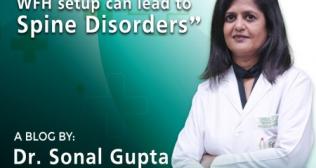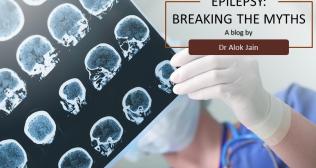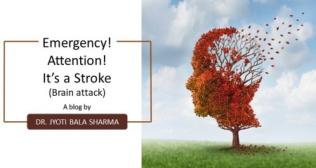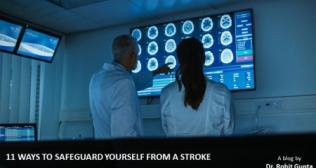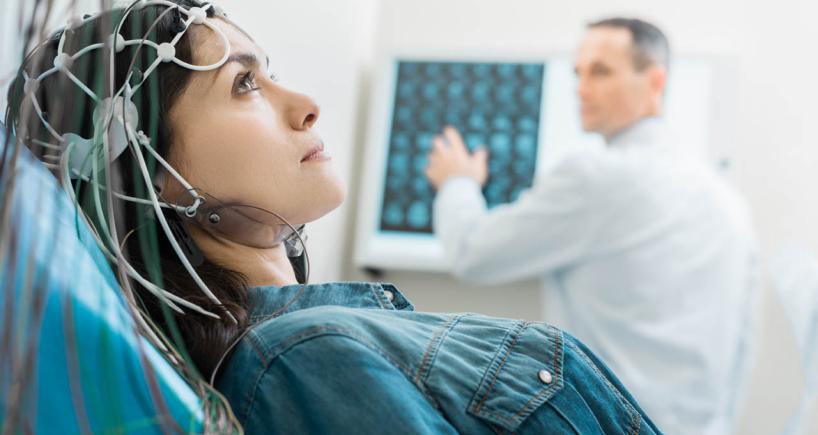
Understanding Seizures, Its types and Seizure Attacks
Overview
A seizure is a sudden burst of uncontrolled electrical activity in the brain that can lead to changes in behaviour, movements, feelings and levels of consciousness. The seizures are usually caused by certain illnesses or medical conditions and are considered to be short-lived and reversible.
The causes of seizures can vary from person to person. Here are some of them:
- Stress
- Abnormal levels of blood electrolytes such as sodium or glucose
- Infection in brain and spinal cord such as meningitis and encephalitis
- Congenital brain defects
- Drug abuse
- Electric shock
- Epilepsy
- Fever
- Head injury
- Snake bite
- Stroke
Identifying specific triggers for seizures is crucial for effective management. Occasionally, seizures can occur without any identifiable causes. Such seizures, called idiopathic seizures, typically manifest in children and young adults but can also occur at any age.
Types of Seizures
Seizures are categorized into generalized, focal or partial, and epileptic spasms.
Generalized seizures are distributed on both sides of the neuronal network. Its subtypes include absence, generalized tonic-clonic (GTC), myoclonic, and atonic.
- Absence seizures are also called as petit mal which involve staring with unresponsiveness to external verbal stimuli, ranging from eye blinking or head nodding.
- Generalized tonic-clonic (GTC): GTC seizures, also called as grand mal which consists of symmetric convulsive movements such as stiffening followed by jerking of both upper and lower limbs with impairment of consciousness.
- Myoclonic and tonic: This type of epilepsy is rare and is usually present in childhood, which involves a sudden fall of the child to the ground with an initial loss of muscle tone.
Focal seizures, also called partial seizures, originate in neuronal networks specific to one area of the cerebral hemisphere. This type of seizure is most common and can begin focally and later generalize. These seizures can manifest in various ways, with symptoms ranging from subtle sensory disturbances to more pronounced motor movements and altered consciousness.
Epileptic spasms
An abrupt 1-2 second flexion, extension, or mixed flexion-extension of the proximal and truncal muscles is known as an epileptic spasm (ES). Infantile spasms, also known as ES, are commonly observed in children between the ages of 3 and 12 months. They can even happen after a kid turns one year old.
Signs of seizure attack
The individual may collapse suddenly and show no response when u talk, touch or wave hand in their faces.
Initially the person’s muscles suddenly contract, causing rigidity and body become like freeze which is called as tonic phase. This phase typically lats for a few seconds.
After tonic phase the next phase is typically a clonic phase which involves rhythmic jerking movements. These movements can persist for a few seconds or even stretch out to several minutes.
The jerking subsides, and the person gradually regains consciousness. The person may look disorientated and confused for a short duration.
Sometimes the person may lose control over urine and bowel during a seizure attack.
Responding to a seizure attack
If you observe someone having a seizure, it's important to stay patient without being panic and follow these steps:
Keep the person safe: It is recommended that any wisdom objects, such as sharp objects or pieces of furniture, be removed from the person.
Don't restrain the person: Again, one should try to head them off to avoid getting struck.
Time of the seizure: To a patient, the first thing to be observed is the length of the seizure.
Don't put anything in their mouth: This can cause suffocation.
After the seizure, remain with the person until he/she is fully awake. Dial an ambulance if the seizure continues after 5 minutes, if the person is injured or has encountered seizure for the first time.
Seeking Medical Help:
In case you or the people close to you are facing such a situation, it is high time to consult a doctor. A doctor, especially a neurologist, can prescribe the right medication after analyzing the root cause of the seizures.
Managing Seizures:
The management of seizures involves preventive measures since it is more of a management issue that starts with identifying the origin of the seizure. Some common approaches include:
Medications: Medications known as anti-epileptic drugs (AEDs) are the most typical treatment coupled with seizures. This is because they act by decreasing high or abnormal activity in the brain.
Surgery: Sometimes, it is possible to remove the part of the brain that is responsible for the seizures through surgery.
Lifestyle changes: Some forms of seizures can be controlled by not taking alcohol or caffeine and maintaining a regular sleep cycle.
Thus, distinguishing between the types of seizures, knowing their symptoms, and the measures to be taken when a person has a seizure can be critical. Remember, seizure is not an end to living; early diagnosis, treatment and encouragement from the family members and the society should enable those diagnosed to live their dreams to the fullest. In case you or your loved one is having seizures, it is recommended that you or your loved one should see a doctor immediately.









